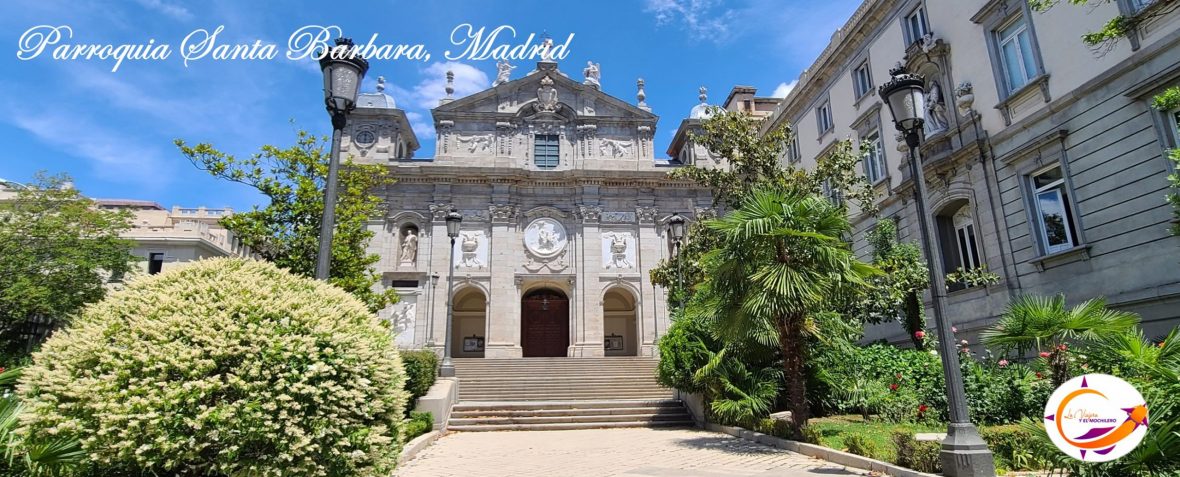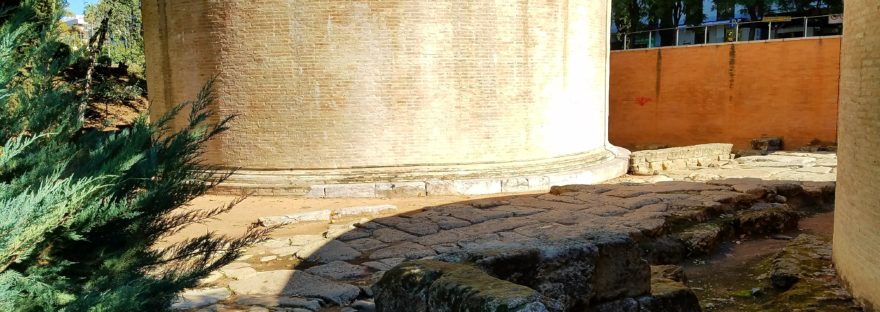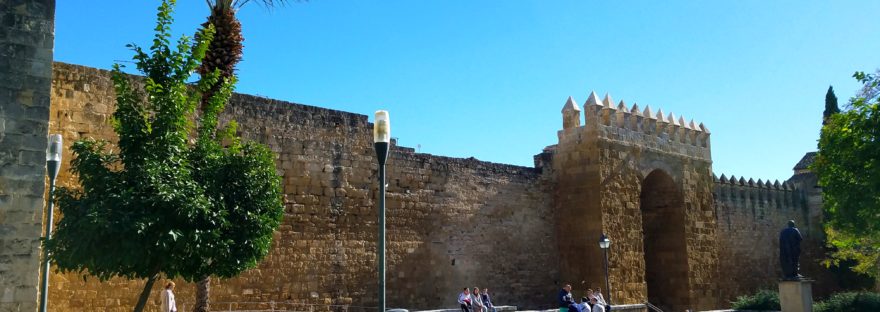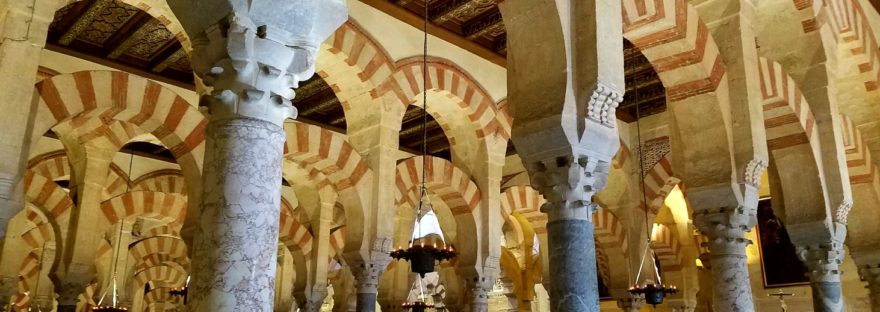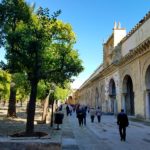 “A beautiful nursery of Orange Trees that catches one’s view upon entering that sacred temple”, this is how Fray Gregorio de Alfaro referred to the the Orange Grove or Garden of the Mosque – Cathedral of Córdoba in his writings towards the end of the XVI century.It’s name is derived from the 98 orange trees planted in rows. Continue reading “The Orange Grove of the Mosque – Cathedral of Córdoba”
“A beautiful nursery of Orange Trees that catches one’s view upon entering that sacred temple”, this is how Fray Gregorio de Alfaro referred to the the Orange Grove or Garden of the Mosque – Cathedral of Córdoba in his writings towards the end of the XVI century.It’s name is derived from the 98 orange trees planted in rows. Continue reading “The Orange Grove of the Mosque – Cathedral of Córdoba”
Category: “Cordoba”
Roman Mausoleum of Córdoba
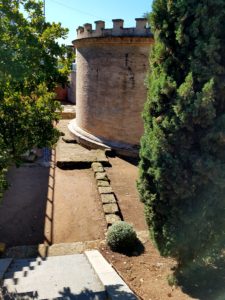 As we strolled through Córdoba, we unexpectedly encountered a large circular or cylindrical structure which turned out to be part of the Roman Mausoleums of Córdoba, a pleasant surprise. In researching the same, we discovered that this was of the most important funeral structures of the city built by the Romans and that they date back to the I Century. We observed that the same had be completely re-built and the burial hall containing Ash Urns as well as remains of its base, cornice and banisters . The Center for the Interpretation of the Funeral World is found therein and can be visited by appointment. Continue reading “Roman Mausoleum of Córdoba”
As we strolled through Córdoba, we unexpectedly encountered a large circular or cylindrical structure which turned out to be part of the Roman Mausoleums of Córdoba, a pleasant surprise. In researching the same, we discovered that this was of the most important funeral structures of the city built by the Romans and that they date back to the I Century. We observed that the same had be completely re-built and the burial hall containing Ash Urns as well as remains of its base, cornice and banisters . The Center for the Interpretation of the Funeral World is found therein and can be visited by appointment. Continue reading “Roman Mausoleum of Córdoba”
Royal Church of Saint Paul in Córdoba
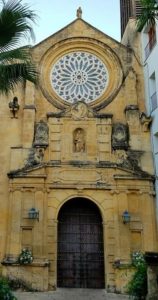 During our visit to Córdoba, we came across the Royal Church of Saint Paul, one of the most outstanding of the city’s center. It is among the first to be established by the Dominican Monks in Spain. It became an important house of study in which great missionaries were developed, such as Brother Francisco de Córdoba, First Martyr of the Evangelization in the Americas, Brother Tomás de San Martín, who placed the first stone of the University of Hispanola and founded the University of Lima (Peru) and Brother Jerónimo de Loaysa, first archbishop of Lime (Peru). Continue reading “Royal Church of Saint Paul in Córdoba”
During our visit to Córdoba, we came across the Royal Church of Saint Paul, one of the most outstanding of the city’s center. It is among the first to be established by the Dominican Monks in Spain. It became an important house of study in which great missionaries were developed, such as Brother Francisco de Córdoba, First Martyr of the Evangelization in the Americas, Brother Tomás de San Martín, who placed the first stone of the University of Hispanola and founded the University of Lima (Peru) and Brother Jerónimo de Loaysa, first archbishop of Lime (Peru). Continue reading “Royal Church of Saint Paul in Córdoba”
Fountains in Cordoba
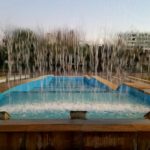 As we strolled back to the Bus terminal in Cordoba along side the ” Avenida de la Libertad”, we cam across a series of fabulous and modern fountains. It sure must be refreshing during the summer. Continue reading “Fountains in Cordoba”
As we strolled back to the Bus terminal in Cordoba along side the ” Avenida de la Libertad”, we cam across a series of fabulous and modern fountains. It sure must be refreshing during the summer. Continue reading “Fountains in Cordoba”
The Almodóvar Gate, Córdoba
The city of Córdoba, Spain, is known as the City of the Seven Gates, in reference to the seven entry points of the walled city. The Almodóvar Gate is current the best conserved of all those existing in Córdoba. It is found close to the “Alcázar de los Reyes Cristianos” and with easy access from the “Cairuán” Street. It is located in a very centric part of the city just a few steps from the Red Cross Hospital and the “Judíos” Street, one of the most popular street within the Jewish quarters. Continue reading “The Almodóvar Gate, Córdoba”
The “Zoco” – Cordoba
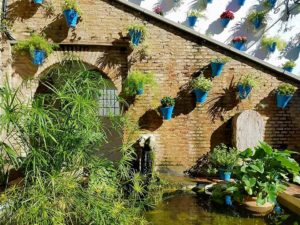
From the Arab word “suq” we get the Spanish term “Zoco” which means Market or marketplace. The municpal “Zoco” of Cordoba was created to promote the traditional arts and crafts of Cordoba. Continue reading “The “Zoco” – Cordoba”
Roman Temple – Cordoba
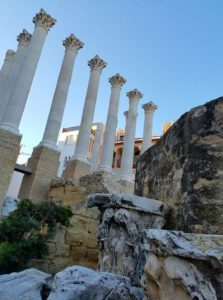
Columns of the Roman Temple in Cordoba. Cordoba, in bearing the title of “Patrice Colony”, built this temple as the the provincial forum during the I and II centuries of Roman domination.
Brotherhood of Our Lady of Sorrows
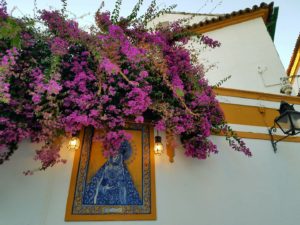
On the Plaza of the Capuchin Monks in Cordoba, Spain and nearby to the ” Cristo de los Faroles” landmark we encountered the main quarters to Brotherhood of Our Lady of Sorrows (“Hermandad de Nuestra Señora de los Dolores”). Continue reading “Brotherhood of Our Lady of Sorrows”
The Christ of Amends and Compassion
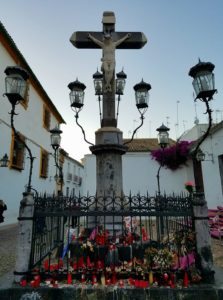 On the Plaza of the Capuchin Monks in Cordoba, we find the Christ of Amends and Compassion structure which is more commonly known as “Cristo de los Faroles” or Christ of the Lanterns. This sculpture was created by Juan Navarro León in 1794 and this is one of the most frequently visited places in Cordoba. The Franciscan Capuchin Monk Fray Diego José de Cádiz, one one of its greatest promoters. This piece was made nationally famous with the 1958 Antonio Molina’s movie “El Cristo de los Faroles”. Continue reading “The Christ of Amends and Compassion”
On the Plaza of the Capuchin Monks in Cordoba, we find the Christ of Amends and Compassion structure which is more commonly known as “Cristo de los Faroles” or Christ of the Lanterns. This sculpture was created by Juan Navarro León in 1794 and this is one of the most frequently visited places in Cordoba. The Franciscan Capuchin Monk Fray Diego José de Cádiz, one one of its greatest promoters. This piece was made nationally famous with the 1958 Antonio Molina’s movie “El Cristo de los Faroles”. Continue reading “The Christ of Amends and Compassion”
Córdoba, city of great treasures
The “Colonia Patricia Corduba” was the capital of the Baetica province under the Roman rule of “Hispania”. A city which allow Rome to be interlinked with the rest of the territory which is known today as Andalusia. The Ancient “Vía Augusta” was and still is today, the main road that interconnects the principal cities of the region. We used “Córdoba” as an exchange axis to visit Andalusia, with its easy access from Madrid and its connections to “Écija” and Granada by means of its transportation network of railroads and buses.
